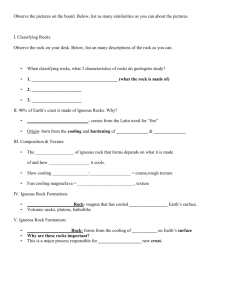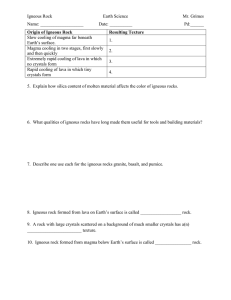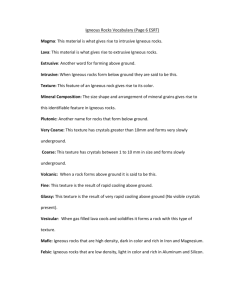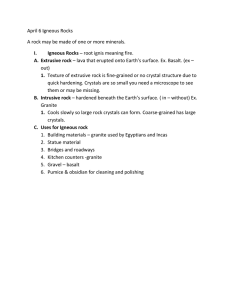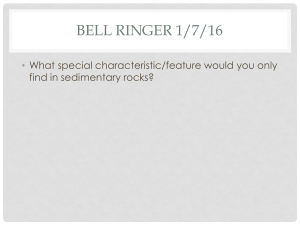Igneous Rocks
advertisement
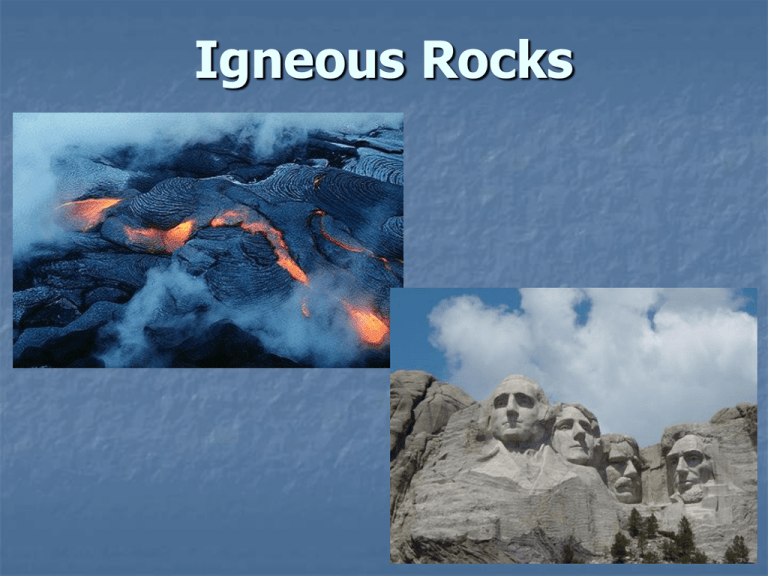
Igneous Rocks BIG Idea Igneous rocks were the first rocks to form as Earth cooled from a molten mass to the crystalline rocks of the early crust. The word ‘Igneous’ means: of or like fire [Latin ignis fire] What are igneous rocks? IGNEOUS rocks are… rocks that form when molten material cools and hardens either below or on Earth’s surface. How do we define MOLTEN? melted changed into liquid form by heat glowing ‘red-hot’ MAGMA: THE PARENT TO ALL ROCKS Molten rock beneath the surface of the Earth (forms underground) LAVA: molten rock that flows out ON to Earth’s surface Igneous rocks are classified based on: 1. mineral composition 2. crystal size 3. texture Two (2) Types of Igneous Rocks: 1. EXTRUSIVE: RAPID (fast) COOLING LAVA ON THE EARTH’S SURFACE 2. small or no crystals fine-grained or glassy textures INTRUSIVE: SLOW COOLING MAGMA DEEP WITHIN THE EARTH’S CRUST larger crystals coarser texture TEXTURE What is the ‘texture’ of an igneous rock? the size, shape, and arrangement of the crystals 1. EXTRUSIVE: SMALL (or no) CRYSTALS - FINE GRAIN (fast cooling, no time to grow) EXTRUSIVE rocks can have air pockets due to fast cooling… Can you name this rock? Hints: it’s the only rock that will float on water, and it’s used for pedicures… Pumice! This texture is described as ‘vesicular’ Gas pockets (holes) make the rock look ‘spongy’ pumice vesicular basalt scoria Obsidian: cooled too quickly for crystals to form Also known as ‘volcanic glass’ 2. INTRUSIVE: LARGE WELLDEVELOPED CRYSTALS = COARSE GRAIN TEXTURE (slow cooling, a lot of time to grow) PORPHYRITIC: LARGE AND SMALL CRYSTALS Magma cooled in two stages COMPOSITION OF IGNEOUS ROCKS 1. FELSIC: high silica (Si and O) and aluminum (Al) content light color low density Rhyolite 2. MAFIC: high iron (Fe) and magnesium (Mg) content dark color high density Basalt 3. INTERMEDIATE: medium color medium density Diorite Lava Plateaus


